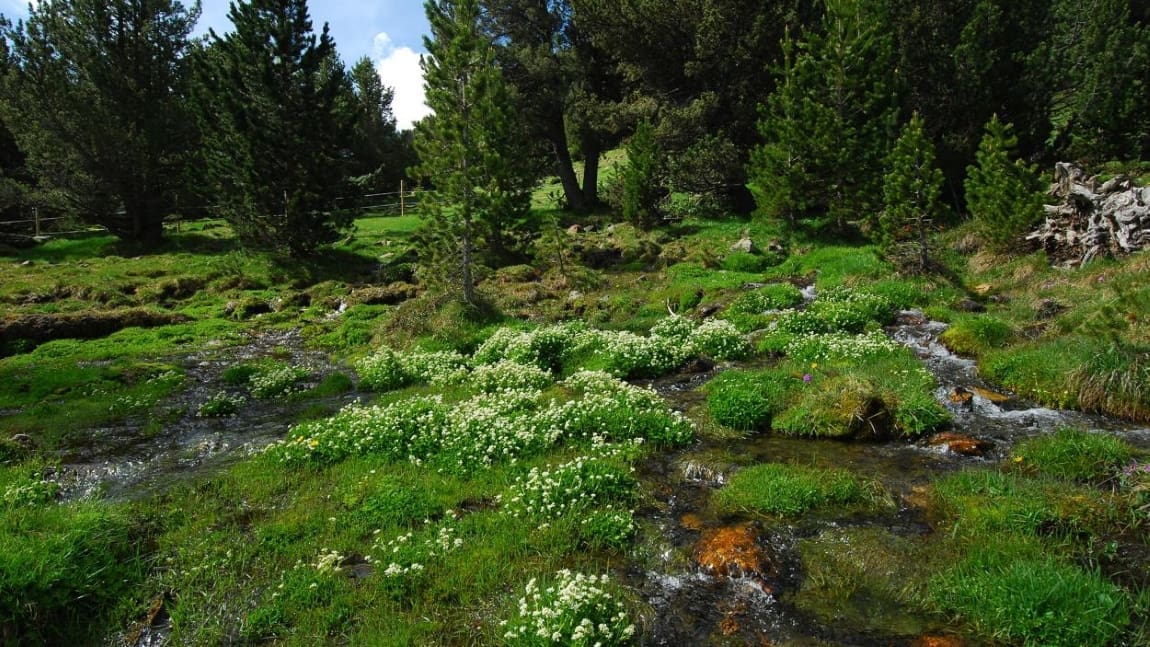International team of evolutionary biologists investigate genomic underpinnings for the adaptive potential of spoonworts.
Plant cold specialists like the spoonworts have adapted well to the cold climates of the Ice Ages. As cold and warm periods alternated, they developed a number of species that also resulted in a proliferation of the genome.
Evolutionary biologists from the universities of Heidelberg, Nottingham, and Prague studied the influence this genome duplication has on the adaptive potential of plants. The results show that polyploids – species with more than two sets of chromosomes – can have an accumulation of structural mutations with signals for a possible local adaptation, enabling them to occupy ecological niches time and time again.
The spoonwort genus of the Brassicaceae family separated from its Mediterranean relatives more than ten million years ago. While their direct descendants specialized in response to drought stress, the spoonworts, or Latin Cochlearia, conquered the cold and Arctic habitats at the beginning of the Ice Age 2.5 million years ago.
In their earlier studies, researchers under the direction of Prof. Dr Marcus Koch investigated how the Cochlearia were repeatedly able to adapt to the rapidly alternating cold and warm periods over the last two million years. Among other things, the newly created cold-adapted plants developed separate gene pools that came into contact with one another in the cold regions. The exchange of genes gave rise to populations with multiple sets of chromosomes. With the size of their genome continually reduced, they were then able to occupy cold ecological niches time and time again.
Nonetheless, explains Marcus Koch, only little has been known until now about the genomic mechanisms and potential that enable the plants to adapt to rapid changes in the environment. “This is even more extraordinary since the majority of our most important crops is polyploid and hence has multiple sets of chromosomes. This very fact is the result of strong selection during the cultivation and selection process,” states Prof. Koch, whose “Biodiversity and Plant Systematics” research group is based at the Centre for Organismal Studies of Heidelberg University.
In the current research under the direction of Prof. Dr Levi Yant, a diploid reference genome with two sets of chromosomes of an Alpine spoonwort species, Cochlearia excelsa, was sequenced and a so-called pan genome reconstructed. It joins together different genome sequences and therefore shows the genetic variations between individuals and further species. To this end, more than 350 genomes of various Cochlearia species with different chromosome set numbers were analyzed. “Surprisingly, the results show that polyploids actually exhibit genomic structural variants with signals for possible local adaptation more frequently than diploid species,” explains Prof. Yant, a researcher in evolutionary genomics at the University of Nottingham (UK).
These structural mutations are concealed by the additional genome copies and are therefore protected from selection to a certain extent, because the accumulation of structural variants can also result in a loss of function. With their models, the international research team were further able to demonstrate that the polyploid-specific structural variants also appear in the very gene regions that could play a significant role in future climate adaptations. A detailed analysis of the genomic data showed that this mainly involves biological processes of seed germination or resistance against plant diseases, according to Dr Filip Kolář, who conducts research at Charles University in Prague and at the Czech Academy of Sciences.
It is probably highly unlikely that the Cochlearia species found in Central Europe today will survive climate change in the end, as Prof. Koch stresses. “Especially the diploid Cochlearia excelsa cannot migrate further in higher and colder regions in the Austrian mountains, since this species of spoonwort has already reached the summit regions to some extent. The Pyrenees spoonwort from the Central European hill and mountain country will also find it difficult.”
The researchers did show, however, that the entire gene pool especially in the polyploid cold specialists can survive, particularly in the northern regions of the Earth. The evolutionary history of these cruciferous plants thereby provides insights into how plants may be able to cope with climate change in the future.
The research work was conducted in particular within the framework of a grant from the European Research Council (ERC), an ERC Starting Grant for Levi Yant. The cooperating team from Heidelberg University developed the Cochlearia model system over the past 25 years with funding from the German Research Foundation.
The findings were published in the journal Nature Communications.
More information: T. Hämäla, C. Moore, L. Cowan, M, Carlile, D. Gopaulchan, M.K. Brandrud, S. Birkeland, M. Loose, F. Kolár, M.A. Koch, L. Yant, ‘Impact of whole-genome duplications on structural variant evolution in Cochlearia‘, Nature Communications (15, 5377; 2024); DOI: 10.1038/s41467-024-49679-y | Heidelberg University Press Release / Material. Featured image: Spoonworts in the Spanish Pyrenees at an altitude of approx. 2,000 meters. Credit: Marcus A. Koch




